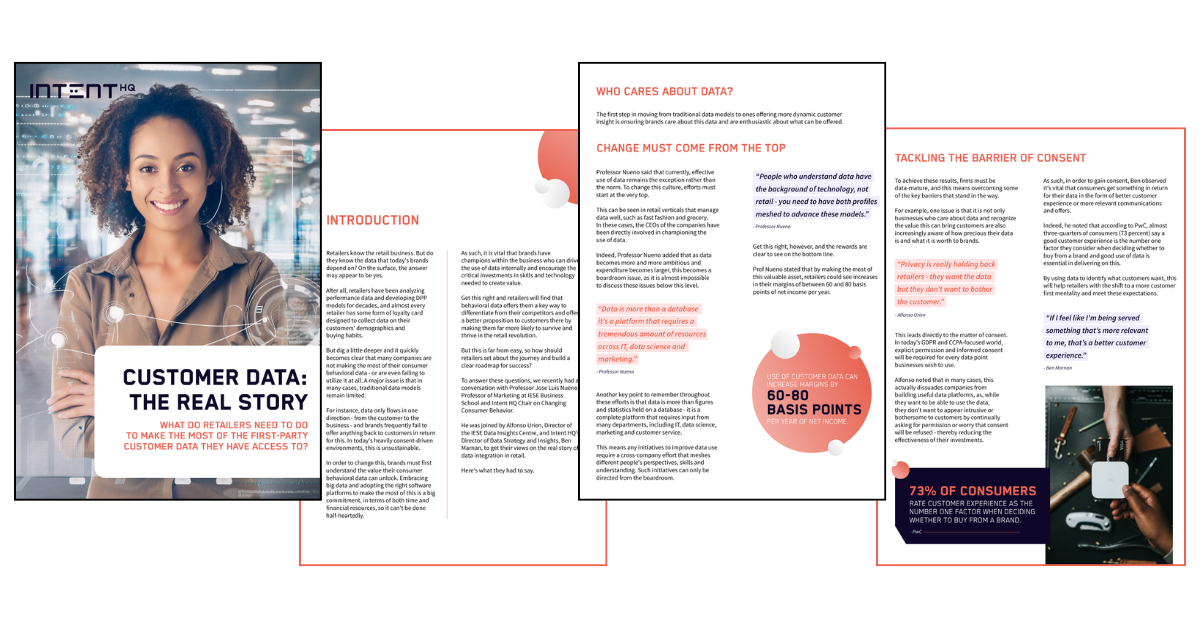Personalization is vital to any successful telco marketing campaign. In today’s highly saturated market, providers can’t afford to compete solely on price. They must instead forge personal relationships with both new and existing customers in order to secure the greatest possible share of wallet, based on a deep understanding of who these people really are.
To succeed, personalized campaigns must be relevant to customers’ individual interests and delivered at the right time, while also respecting their privacy. But are telecom operators really doing enough with the assets they have available to achieve this?
In order to find out, Intent HQ commissioned two surveys – one of operators and one of consumers. These sought to find out not only what providers are actually doing when it comes to personalized marketing, but also whether these efforts match up with what consumers actually want.
Telcos failing at the basics of personalization
One of the key findings of our survey of telecom operators was that in many cases, their use of personalization falls far short of what customers now expect. Often, these efforts are patchy and primitive, only scratching the surface of what’s possible were they to use their valuable first-part customer data effectively.
For example, one surprising finding was that almost half of operators (45 percent) don’t even use their customers’ names in all their correspondence, while for others, this is the full extent of their personalization. Although not likely to change many minds in itself, this presents a poor first impression in any communication, and furthers the perception that telcos don’t know, or aren’t interested in, who their customers really are.
Other findings reinforce this idea. Less than half of respondents (48 percent) said they aim to only contact customers with information and marketing offers that are relevant to their
interests and needs, while only one in three (35 percent) make it a priority to contact customers with timely offers.
Why telcos rely on mass marketing efforts
This means that the majority of telcos still use unfocused mass marketing campaigns that rely on high-volume blasts to drive conversions. Naturally, this is a highly inefficient way of reaching out to people and results in poor returns on investment.
One reason for this is that telecom providers still use legacy platforms such as CRM systems for their data analytics processes. These tools may often be riddled with inaccurate or incomplete data that means marketers aren’t confident using them in their messaging – with the result that communications lack basic details.
In order to better serve customers at the right time, in the right place, with the right messaging, telcos will need to understand and segment their audiences effectively. For example, being able to know which sections of a customer base would prefer to be reached by email and who will only respond to SMS or social media marketing is vital in building relevance.
This information is often available, either in the specific permissions customers grant or deny to their telcos, or in their behavioral data. But in many cases, telcos do not have easy access to this information, or don’t update it regularly enough. The result is they lack confidence in their ability to effectively personalize their efforts and a reliance on mass marketing messaging.
What customers actually want from their operators
It’s clear that telcos need to do more if they’re to effectively engage with their customers on a personal level. But just doing the basics isn’t enough.
Using customers’ names in all communication, for example, is unlikely to be a game-changer in terms of connecting with customers. Today’s consumers are far more sophisticated than this – indeed, almost two-thirds don’t see this as something they value highly. However not doing it at all spells out clearly that an operator isn’t giving personalization the attention it requires.
Customers want telco marketers to go beyond superficial attempts at personalization. Almost half of respondents to our survey (48 percent) expect operators to understand which forms of communication they prefer. Meanwhile, 45 percent only want to receive offers, services and information that’s directly relevant to them, indicating they are turned off by mass marketing techniques.
When done correctly, careful analysis of their data can provide essential insights to help with this. For example, predictive analytics can study the success rates of interactions and identify the best audience and channel for specific interactions. Meanwhile, the use of tools like artificial intelligence and machine learning can look at huge data volumes in order to spot patterns and identify customers with similar profiles for more targeted campaigns.
Intent HQ’s research illustrates the critical importance of personalization to the success of telco marketing campaigns.
Download the full 24-page report to learn more about our findings.
Image credit: iStock/tommaso79




